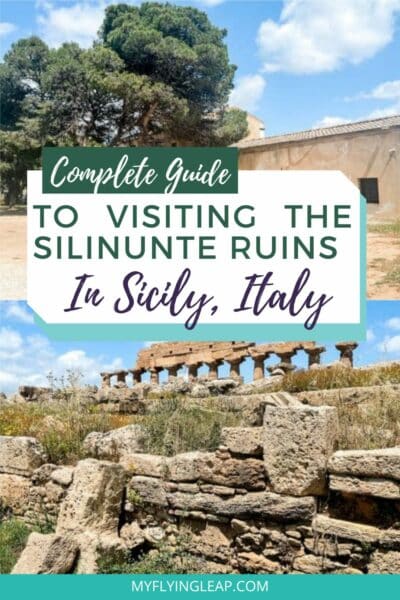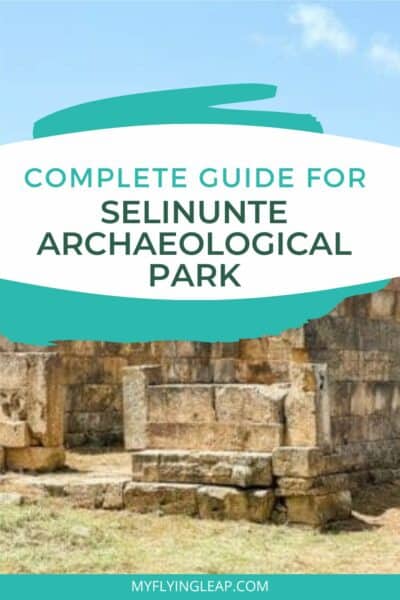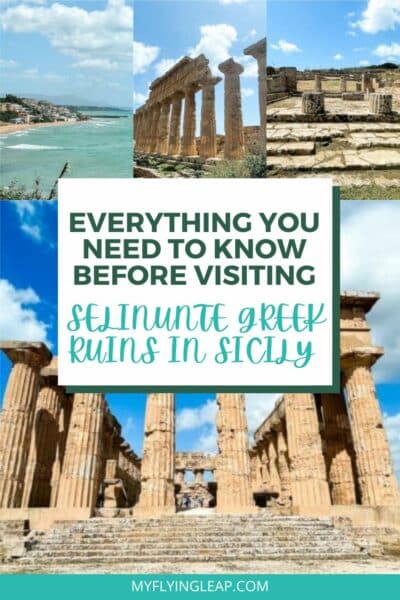Selinunte Archaeological Park—Visit the Selinunte Greek Ruins in Sicily
No visit to Sicily would be complete without a visit to Selinunte Archaeological Park.
This park is one of the largest Greek colonies and the largest archaeological area in all of Europe. Just like much of Sicily, this once thriving city changed hands several times over the centuries.
It represents the Sicilian experience in many ways. You can wander the 270 hectares (just under 670 acres), climbing over the rocks that once were homes, administrative buildings, city walls, and temples, to see what life might have once been here.
Much of the location remains in its found state, so it’ll take some imagination to see it as it once was. However, the museum on-site does a great job of that.
In this post, we’ll review the history of Selinunte, why you should go, and what you need to know to visit. We’ll also share some insights from the other Greek ruins on the western part of the island.
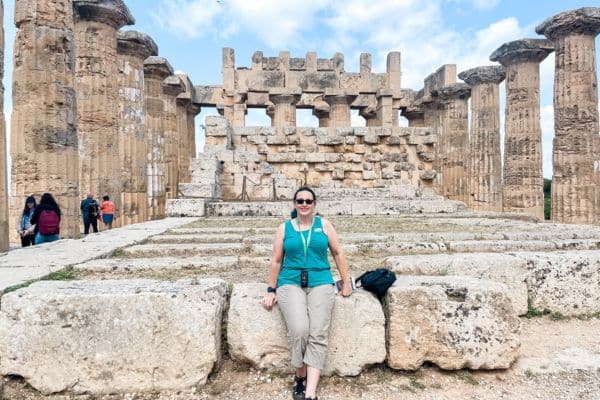
This post may contain affiliate links, which means I’ll receive a commission if you purchase through my links at no extra cost to you. Please read the full disclosure for more information.
Selinunte Archaeological Park Visit Details
Selinunte is located near the villages of Marinella and Triscina. The main entrance closest to the East Hill is in Marinella.
Both are small seaside towns. Marinella seems to have a bit more in the way of places to stay and restaurants, so we stayed there.
- Selinunte Archaeological Park is open from 9 to 6 daily. Visitors must leave the park by 7 p.m. or earlier.
- It’s located at 91022 Marinella di Selinunte, Free municipal consortium of Trapani, Italy. (If you want to take public transportation, you’ll go to Triscina.)
- Tickets cost € 8 (around $8.50 USD).
- Audioguide (which I highly recommend unless you get a guide) is € 5.
- Shuttle cost: € 12 for the longer shuttle ride, which is a 10 km walk.
- The total cost is € 25 (around $27.46 USD) with the ticket, shuttle, and audioguide.
There are bathrooms at the ticket office, Baglio Florio Museum, and the Acropolis. There is a small cafe at the Acropolis.
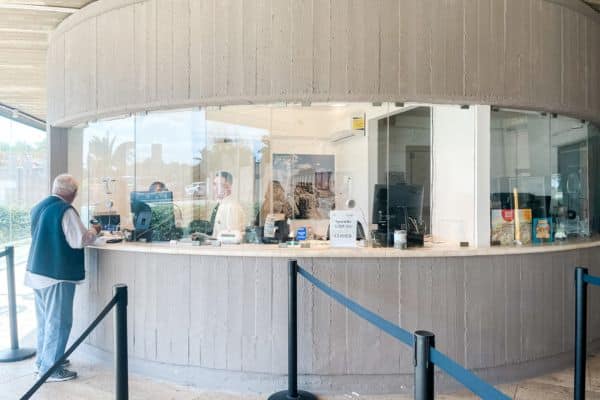
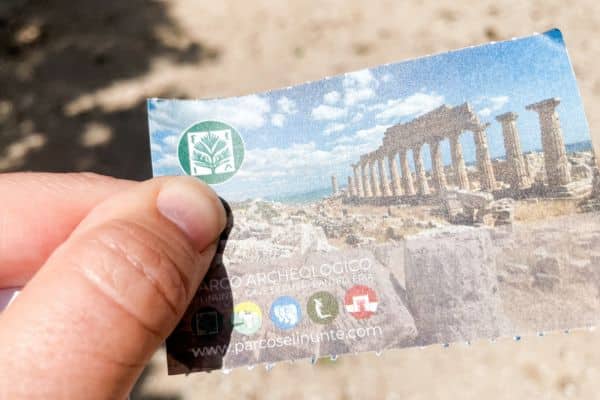
Brief History of Selinunte
Selinunte, named after the wild celery found throughout the area on the river banks, was founded around 650 BC by people from Megara Hyblea (now Augusta). It was located near the sea, and it was important for Mediterranean trade routes. The land was also good for farming.
It grew over the next two hundred years due to political and commercial relationships with the Greeks and Carthaginians into one of the most prosperous cities in Sicily. It was known as Selinous under Greek rule and Selinus under Roman rule.
The city walls were created, and several temples were created. Growth peaked for the city around the fifth century. Selinunte had peaceful commercial relations with the Phoenicians, who settled in areas of Sicily like Agrigento and Syracuse.
In 413 BC, Selinunte fought several battles with nearby Segesta over territory, and the cities were in constant conflict. Segesta was supported by Athens and Carthage (now in Tunisia, northern Africa).
Just a few years later, Carthage’s leader, Hannibal, conquered Selinunte, killing all but women and children. This ended the Greek colony and established Selinunte as a colony under Carthage.
During this time, it was partially rebuilt in the area of the Acropolis. The locals tried to break free from Carthage during the First Punic War. The city was left under Roman rule.
At its peak in around 400 BC, Selinunte was a city of around 30,000. It existed until around 250 BC, when the Romans destroyed and abandoned it.
The colony of Selinunte was rediscovered in the 16th century. Excavations were carried out in the early 19th century, leading to its prominence in visits today.
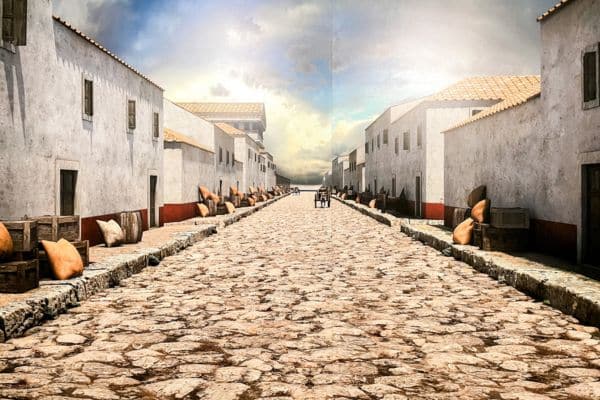
Recreation of Selinous at the Baglio Florio Museum
What to See at Selinunte Archaeological Park
Selinunte is the largest archaeological area in Sicily as well as all of Europe, covering 270 hectares of land (around 670 acres). It’s located in southwest Sicily between two rivers, the Modione River and the Cottone River.
There are five areas of the archaeological site:
- Acropolis—Located near the park’s center, including temples and fortifications.
- Mannuzza Hill—Located near the north of the site with ancient housing.
- East Hill—Located in the east with temples.
- Gaggera Hill—Located in the West, with the Sanctuary of Malophoros.
- The two Necropoleis.
You could easily spend days exploring this huge park’s different areas. Unless you’re an archaeologist or are interested in doing that, you’ll want to focus your time.
I recommend visiting the Acropolis, East Hill, and Gaggera Hill. That’s what the ticket office suggested to us and what our host did as well. Then, if you still want to explore more, you can!
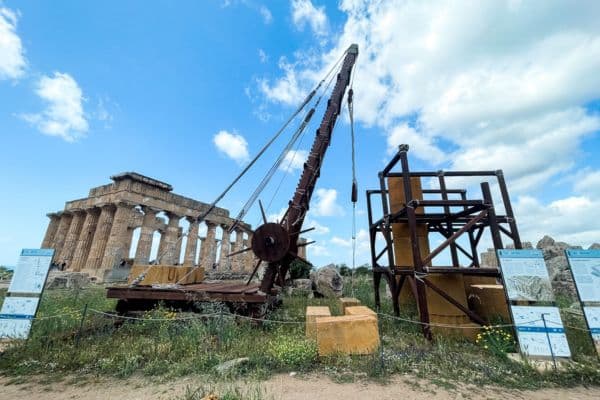
East Hill
East Hill is a park highlight and worth seeing first. It’s a short walk from the ticket office, so it makes sense to start your tour of Selinunte here. It’s also the location of the only partially reconstructed temple.
In this area, you’ll find the ruins of three temples: Temple E, F, and G. The temples were built parallel to each other, facing east, so the first rays of the sun enter. You’ll also see ancient tools and machinery used to build the temples.
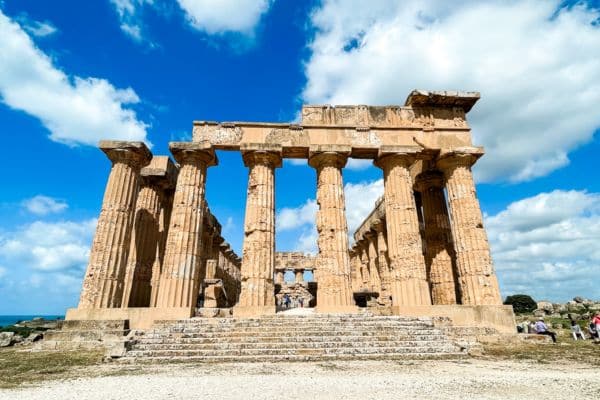
Temple E
Temple E is the only temple partially reconstructed. It’s a Doric Temple built before 500 BC. It’s believed that it was dedicated to the Greek goddess Hera.
It was built in five phases before it was destroyed by fire around 500 BC. The second construction was completed in around 470 BC. It was built with 15 columns on the long sides and six on each of the short sides. These columns were covered in a layer of white plaster.
An earthquake later toppled the temple, but the columns were rebuilt in around 1958.
You can walk through it and all around the inside, taking in the views. You can see just how massive these stones are and what a feat of engineering building these temples was.
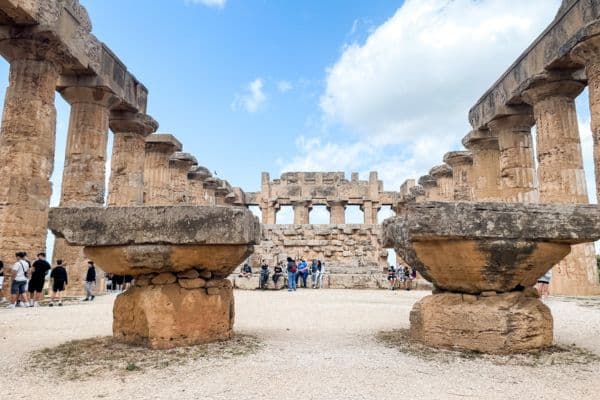
Temples F and G
Both temples F and G have not been rebuilt, so they are in a large pile of rubble.
Temple G was believed to have been a Temple for Zeus, the Greek king of the gods. It was one of the largest temples built in the world as if this time, and the largest in the Greek world.
This temple was designed to compete with the other iconic temples of its time. However, it was never completed.
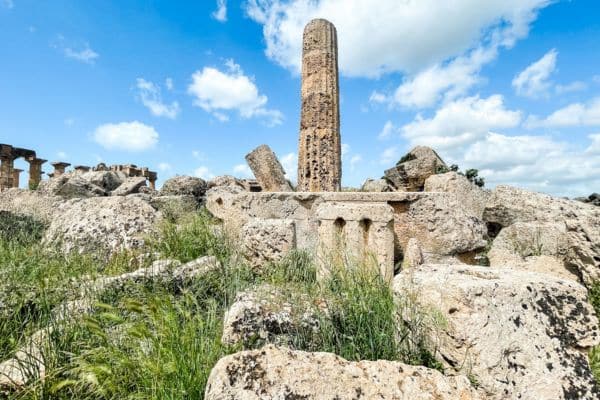
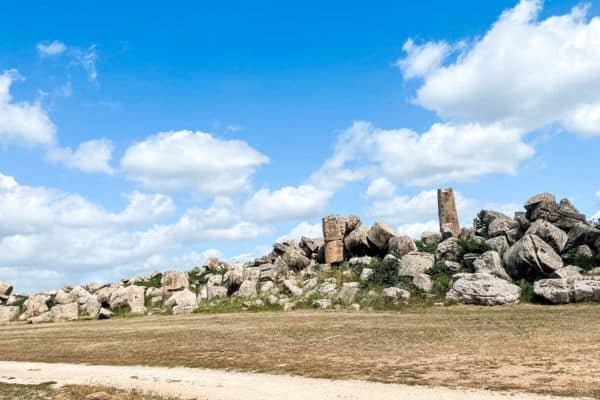
Baglio Florio Museum (Baglio Florio Museo)
This structure was a typical farmhouse built during feudal Sicily. It was built in the first half of the 19th century and was linked to the winemaking business of the Florio family.
During the time it was built, the land was owned by landowners in large plots. There is a mansion built for the landowner on a higher area, representing the elevated position. This structure was where the workers lived.
The museum is well worth a visit as it shows many artifacts from this area. The Institute of Fine Art of New York University worked with the archaeological park in 2006 to excavate the area.
You’ll find items from the temples and some of the areas where people lived in the museum. There’s also a piece of carved stone from the 5th century BC.
There are also items from the excavation of the German Archaeological Institute of Rome, which operated from 1996 to 2007. The focus of this excavation was on the Acropolis.
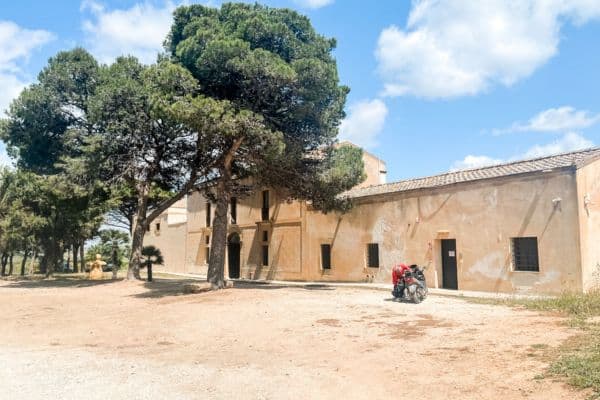
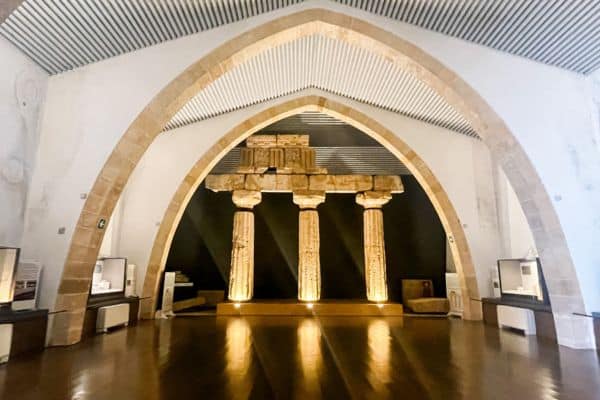
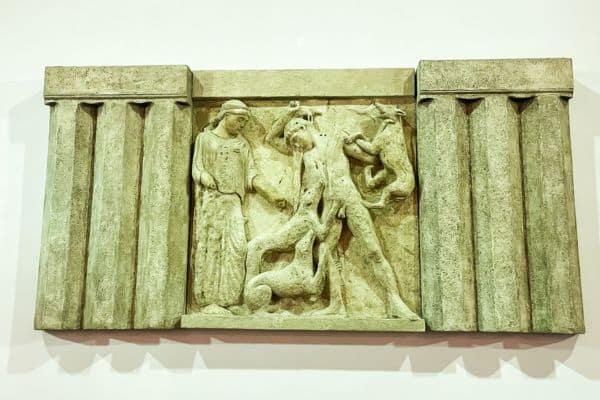
Gaggera Hill
On Gaggera Hill, you’ll find the Sanctuary of Maloferus (meaning apple bearer). This is a reference to the goddess Demeter, whom the sanctuary was dedicated to.
There are also the remains of a wall that was partially constructed in the 19th century.
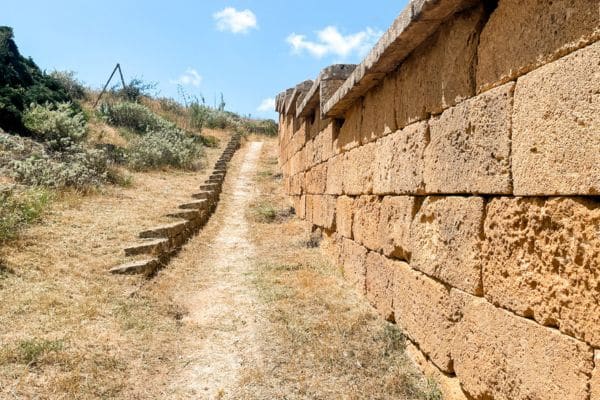
In this area, they found thousands of terra cotta figurines. It’s one of the most important places on the site, and it shows evidence of use as early as the 7th century BC.
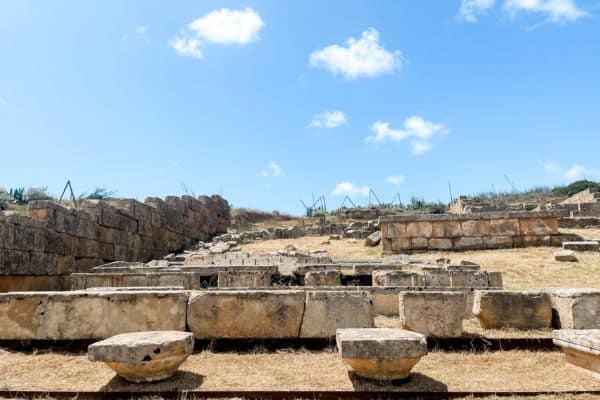
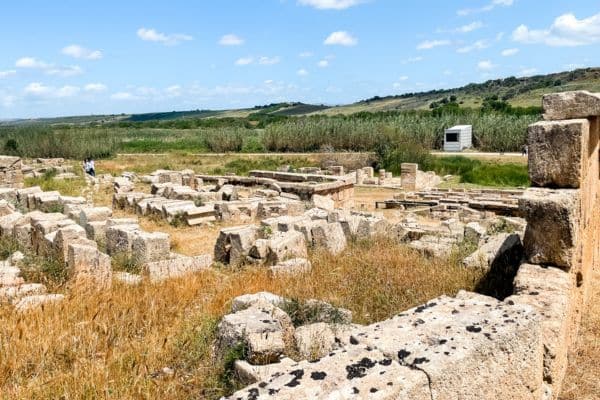
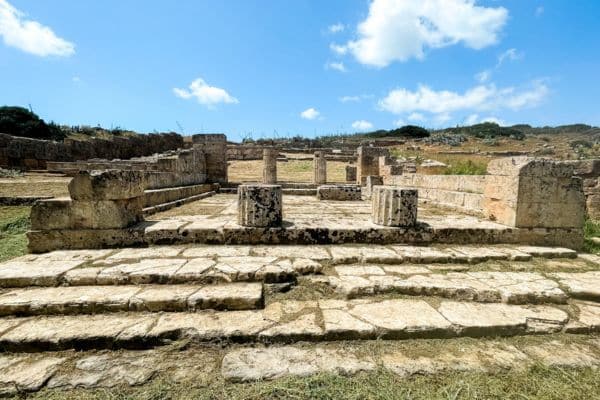
You’ll also see the Sanctuary of Hera, which was partially rebuilt during the excavations.
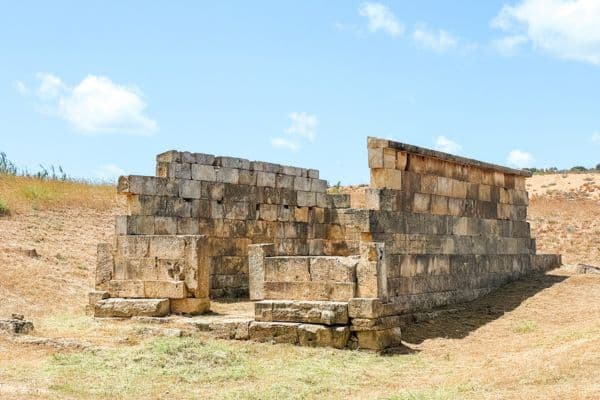
Acropolis
The Acropolis, or city of Selinunte, was ideally located between two elongated hills, later surrounded by a defensive wall. Rivers to the east and west flowed into the bay and served as harbors.
The Acropolis was built on the highest point in the area on the southern hill. It included public and religious buildings, as well as residential areas.
When it was constructed during the 6th century BC, it was organized in a grid plan with parallel streets. You can even still see ruts in the stone roads made by the chariots.
Acropolis Temples
You’ll see sanctuaries and several monumental temples called A, B, C, D, O, and R.
The oldest temples, C and D, are from around the middle of the 6th century BC. They were built with collonades on the eastern part of the Acropolis. Temple D was believed to have been dedicated to Artemis, though it is now thought to be dedicated to Athena, the goddess of war.
Temple R was also built around this time, and it was the first monumental building in Selinus. Vases and terra cotta statuettes were recovered from the site and are located in the museum. An earthquake in around 300 BC destroyed it.
Temple B was constructed around the middle of the 3rd century BC and appears to be a replacement for Temple R. It was built without a colonnade and painted green, unlike the other temples built previously.
Temples A and O were erected later.
These temples have not been reconstructed, though some of the columns remain partially standing. However, there are signs with images and details about each temple so you can get an idea of how they once looked and their size.
You can walk on and through the rocks that once were the temples.
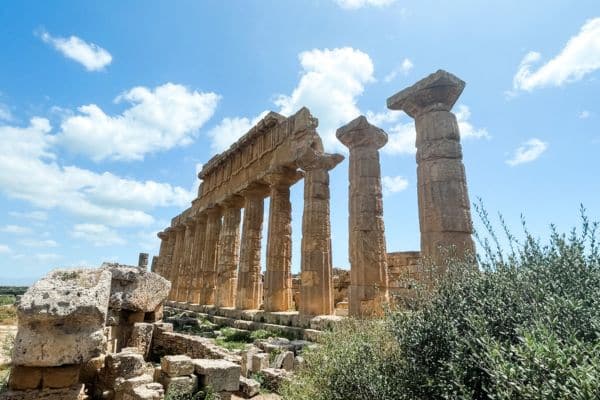
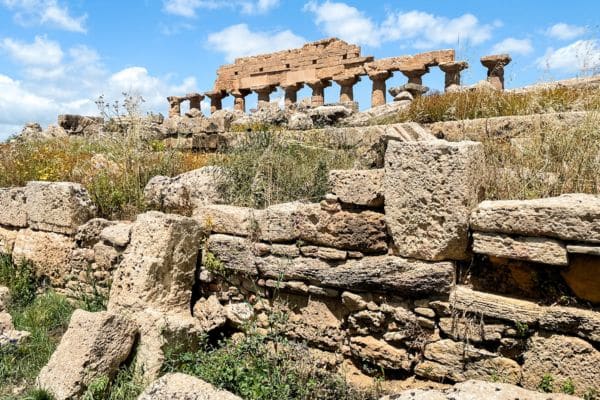
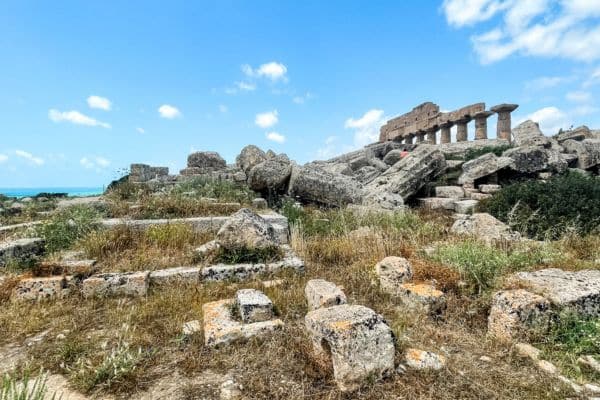
When to Visit Selinunte Archaeological Park
Selinunte is a great place to visit at any time of year. The weather can be quite hot in the summer, and the complex has no shade, so keep that in mind.
Visiting in the spring, fall, and winter may be more comfortable. However, you can visit whenever you’d like!
How Much Time to Spend in Selinunte Archaeological Park
Plan to spend 2-4 hours visiting Selinunte Archaeological Park. The different sets of ruins are not close, and you should prepare for a 30 to 60-minute walk between each of them.
The paths are well-established and easy to follow. They do go uphill, and there’s no shade or water between them.
If you take the little shuttle between them, you can save time. But you’ll still want to spend at least 2 hours visiting, especially if you want to read the information shared and listen to the audio guide.
How to Get to Selinunte Archaeological Park
You have the option to visit Selinunte by car, by public transportation, or by tour. Though costs vary, your best bet is driving or taking a tour if you can.
Driving
Selinunte Archaeological Park is located next to the town of Marinella. If you’re driving, plan to stay in Marinella. There are lots of hotels and restaurants in this small town, and it’s easy to walk to the park from any accommodations.
There are two entrances to the park: one in Marinella, which we went to. The other is in Triscina, which you’ll enter through if you use public transportation.
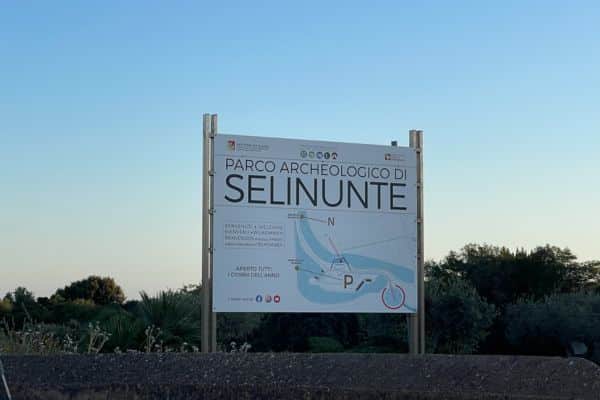
Public Transportation
If you want to take public transportation, you have that option. Take Trenitalia to Castelvetrano from Palermo or Trapani. Then, you need to take a taxi or a bus to Triscina di Selinunte.
In the village of Marinella di Selinunte, you’ll access the park on Selinunte Street. It’s an easy walk from most places in this small village.
If you stay in Triscina di Selinunte or take public transportation, you’ll access the park on Mediterraneo Avenue.
Tours
You’ll also find tours to visit Selinunte. This Selinunte tour from Trapani is private, just for your group. There are flexible pickup options in and around Trapani.
Want to see both the Segesta ruins and Selinunte? You can go on this private tour!
You can also buy your ticket online in advance if you’re interested. No waiting onsite to get in!
I also read that you can get a tour of the park on this cute little train. I didn’t see the cost for that at the ticket office, so ask if you’re interested.
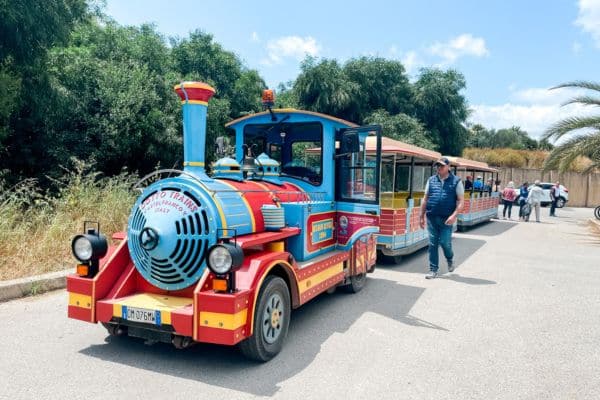
How to Get Around Selinunte Archaeological Park
Selinunte Archaeological Park is quite large, so you’ll do a lot of walking and hiking to get around.
They do offer shuttles that take you to some of the primary sites. If it’s a scorching hot day like when we visited, it’s well worth this little luxury. The property has no shade, and you’ll only find refreshments at the entry and near the Acropolis.
The walks are easy, though long. And though you’ll walk on a pathway for much of it, some areas are uneven and rocky. This is particularly true when walking in areas with ruins in the park.
You are able to walk all around and through the ruins, which is quite nice. However, please be respectful and leave it as you found it.

What to Do Around Selinunte
Visiting the Selinunte ruins isn’t the only thing to do in this area. Here are a couple of other options.
Explore Marinella di Selinunte
This small village is a quaint spot to wander. Take in the gorgeous ocean views and grab a bite at the many fantastic restaurants in the area.
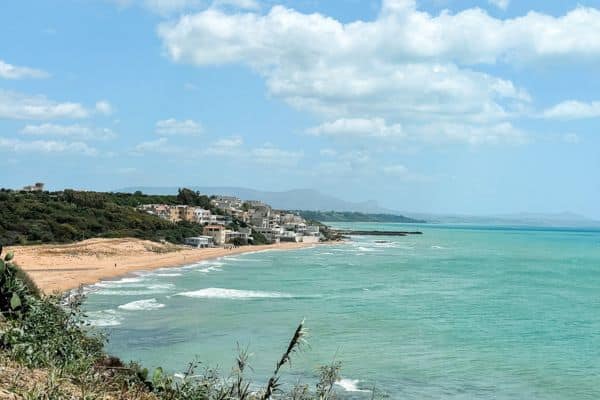
Pierrot Ristorante has a great pizza capriccioso (with tomato sauce, cheese, mushrooms, black olives, and prosciutto). The bruschetta is served on pane nero (“black” local bread).
Baraonda is wonderful with fresh, local seafood dishes like seafood risotto (risotto alla marinara). Both offer ocean views.

Scala dei Turchi
This exquisite white cliff is a fantastic spot at sunset. There is a barricade to keep people from walking on it due to the potential for landslides. However, many people made their way around it to take in the sunset on the way to Agrigento.
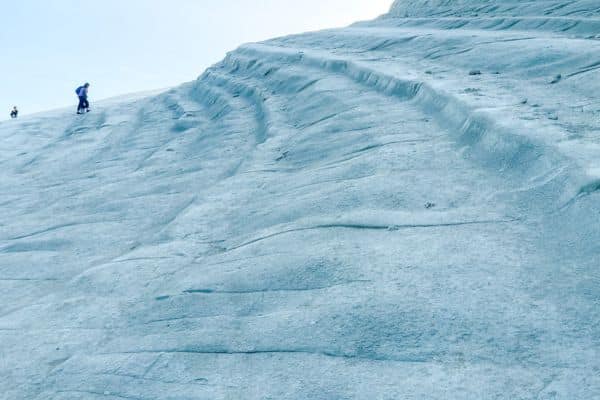
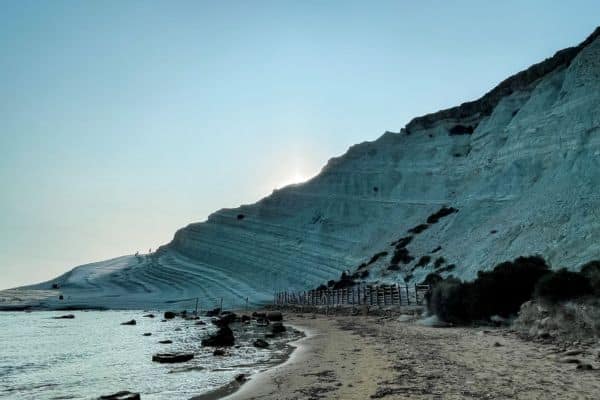
Should You Visit Selinunte Archaeological Park?
There’s something incredible about walking through thousands of years of history. At Selinunte Archaeological Park, you get to do just that.
It’s the perfect compliment to a western Sicily road trip. And it’s really interesting to compare it to the nearby ruins of Segesta and the Valley of the Temples.
You Might Also Like
- What to Expect at Gypset Yoga Retreat Italy—a Detailed Review
- 11 of the Best Things to Do in Capri for a Perfect Day
- What to See When You Visit Pompeii Archaeological Park
- Why You Should Visit the Herculaneum Ruins + Top Tips
- Rome in a Weekend—How to See All of the Top Sites
- 3 Best Umbria Towns to Visit—Gubbio, Perugia, and Assissi, Italy
- Visit the Vatican—A How-to Guide for Visiting Vatican City
- Naples National Archaeological Museum—Why It’s a Must-See + Visit Tips
- Trastevere in Rome—What to See + Top Trastevere Restaurants
- Top Things to Do in Sorrento & Reasons to Stay There
- Segesta Archaeological Park—All You Need to Visit the Segesta Ruins in Sicily
- 8 Top Things to Do in Cefalù in One Day
Like it? Pin it!
